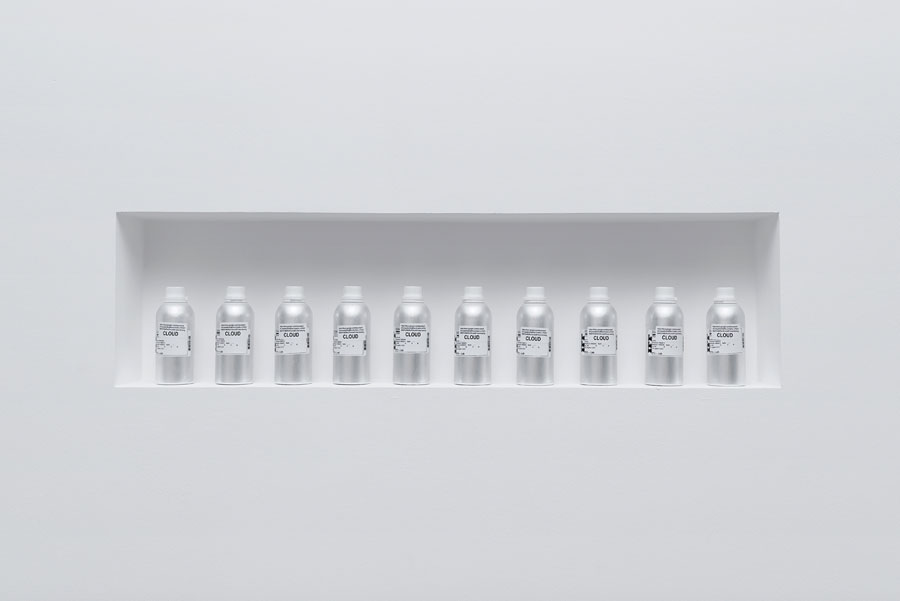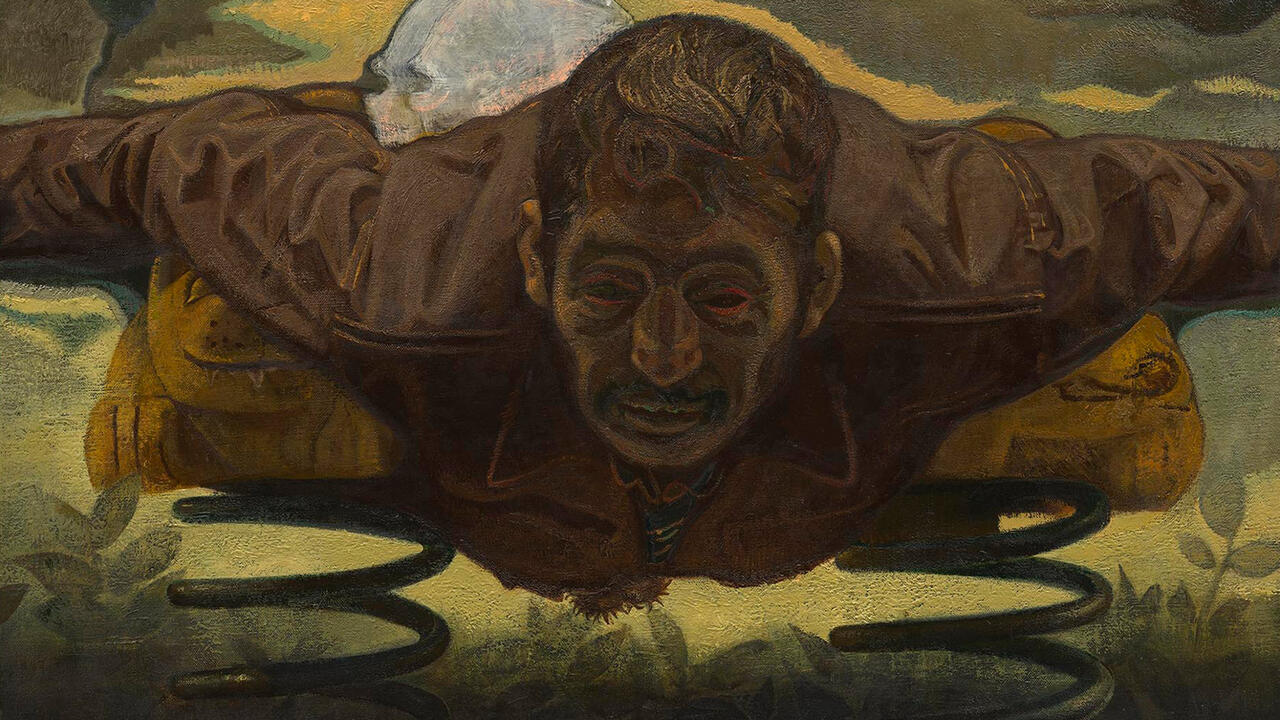Something in the Air
At a time of instantaneous information and fetishized immersivity, artists are evoking scent as an alchemical, bodily response
At a time of instantaneous information and fetishized immersivity, artists are evoking scent as an alchemical, bodily response

After passing through ten scented rooms in London’s Somerset House – nostrils agape from the smell of ink, musk and semen – dutiful sniffers are faced with an exclamation: ‘Perfume is becoming an art form that speaks most compellingly of the beginning of the twenty-first century.’ A desire for scent, this wall text argues, is a hankering for authenticity in a landscape of instantaneous information: a ‘visceral medium for a digital world’.
Ten perfumes are at the heart of these ten installations for Somerset House’s ‘Perfume’ exhibition, ranging from fun-fair photo booths to Catholic confessionals, each based around a synesthesiac coupling of set and sound design. Antonie Lie’s ‘Sécrétions Magnifiques’, mimicking the smell of milk, blood, sweat, semen and saliva, is sniffed from clumps of sheet on an unmade bed. Mark Buxton’s ‘Comme des Garçons 2’, based on a one-line brief to create the smell of a swimming pool filled with ink, is inhaled from black pool 8-balls scattered across a bed of black resin.

These installations are described in terms of multi-sensory experiences; borrowing from the language of immersive theatre, craft beer, virtual reality and shopping malls. In all of these disparate zones, the emphasis is on presence: a sensory tickling, bodily authenticity. The thinking goes that there’s none more bodily, nor affecting, than the raw power of scent. As Patrick Süskind writes in his 1985 novel Perfume: ‘The persuasive power of an odor cannot be fended off, it enters into us like breath into our lungs, it fills us up, imbues us totally. There is no remedy for it.’
But noses aren’t new, so why is scent being foregrounded in the 21st century? ‘Even though you can’t smell digitally, perfume is intrinsically linked to the digital sphere,’ says Claire Catterall, senior curator at Somerset House. The digital realm has played an important part in the surge of interest in perfume and it its wider dissemination and appreciation.’

Catterall is referring to the advances made in creating aroma chemicals and to online marketplaces that sell ingredients and make it easier to commission perfumers. She points to the rise of digital technology as a practical medium for scent’s current popularity – not only for perfumers, but for artists ‘able to use scents in ways that they’ve never been able to before.’ Catterall cites Anicka Yi, who frequently works with chemists and perfumers in her work. For her 2015 show in Kunsthalle Basel in Switzerland, ‘7,070,430K of Digital Spit’, Yi collaborated with French perfume-makers to create ‘the scent of forgetting.’ This involved imagining the experience of an amniotic sac-bound fetus to that of an Alzheimer’s patient surrounded by hospital beds. The resulting smell was infused into the printed pages of the exhibition catalogue, which visitors were encouraged to burn after reading.

Yi has described her approach as ‘techno-sensual alchemy’, and the semi-ritualized destruction of the scented catalogue, and the releasing of its hidden scent, certainly taps into perfume’s evocation as something mysteriously affective, ritualistic and magical (see this recent frieze.com piece on the techno-gothic). These associations, and their relationship with the lab-made reality of synthetic toiletries, also inform the work of Victoria Adam. Her 2016 exhibition at the Zabludowicz Collection, titled ‘☽⦶’ after the alchemical symbol for lunar caustic – today known as silver nitrate – made use of objects pulled from medicine, bathroom products, air fresheners and cosmetics. Like Yi’s work, it pulls on the language of alchemy to turn quotidian remnants of consumerism into abject clumps of scent-sodden sculptures, part-Eva Hesse, part-Robert Gober, like a sacrificial altar in a Boots’ carpark.

Targeting this tension between perfume-as-magic-spell and perfume-as-consumer-product from an altogether more satirical angle is Andreas Ervik, whose SANKE project (2014–ongoing) pitches itself as an ‘avant-garde luxury brand’. For prices reaching USD$300, customers can buy smartly packaged portions of Norwegian river clay, river water and perfume that smells like moist soil. Instead of arcane alchemy, Ervik goes after the appeal of natural material as something supposedly simple, authentic and comprehensible on a bodily level. ‘It’s really easy to get confused today, but deep down your body knows what you need,’ he writes on SANKE’s website. ‘Listen to your body.’
It would be easy to read SANKE as a straight-up caricature of the modern perfume industry, in many ways typified by the ‘natural’ odors and multi-sensory installations that fill Somerset House’s exhibition. The desire for bodily understanding runs deeper than Norwegian rivers, however. It not only snakes across beauty counters and bathroom shelves, but beneath the remote server centres that carry our social accounts, dating patterns and personal finances.

Needling the question of comprehensibility in a society increasingly accustomed to digital abstraction is Cécile B. Evans. As part of her 2015 work Hyperlinks or It Didn't Happen, Evans made a beauty oil with the London gallery Studio Leigh, called SOFTNESS, advertised via a CGI Japanese singer Yowane Haku. ‘At the time, it wasn't so much a reaction against the dominance of digital technology but more of a reminder of its physical presence and inherent occupation/participation of the body, which it felt like a lot of media/conversation was wilfully ignoring,’ Evans tells me over email.
‘The idea [was] that data is a physical matter which carries information, including emotional information, and that SOFTNESS was a different container or conduit for that, which could convey a more obvious viscosity.’
While smell tends to be framed as a visceral counterpoint to the fleshless realm of data, Evans’ description of SOFTNESS stresses the underlying physicality of ones and zeros. Digital information is not an ethereal quantity, but – like scent – is built on physical matter that necessitates a participation with our bodies to be both made and experienced.
‘Someone, in order to achieve whatever website, bit of code, or digital animation, has not done so by magic but by spending hours, days, or sometimes weeks sitting in a chair, moving their hands, and ... working,’ says Evans. ‘The physical body is still contended with, your back hurts, your hands develop muscle pains and strains.’

Clémence de La Tour du Pin’s CLOUD oil solution, made with the support of International Flavors & Fragrances and exhibited as part of Co-Workers at Paris’ Musee d'Art Moderne, touches on comparable grounds, undercutting the semantics of cloud computing with something explicitly bodily. More recently, Anna Ridler’s 2017 work Drawing Sound doesn’t use perfume, but its combination of drawing and generative sound design does use elements of performance to similarly foreground the human body against technological means of production, in this case artificial intelligence and machine learning.
Whether or not it’s a ‘visceral medium for a digital world’, scent is lingering, perhaps as only the most pungent part of a wider embracing of sensory experiences, with artists responding in one way or another to a society that fetishizes immersivity as a route to ‘authenticity’. Ultimately, the body still has power at a time where clouds exist in remote warehouses, and when the smartphone in your pocket can replicate a human voice, but not the smell of breath against your neck.
Main image: Kim Keever, Abstract 1189252014 (detail), c-type print, 102 x 135 cm. Courtesy: © Waterhouse & Dodd, London / New York




















